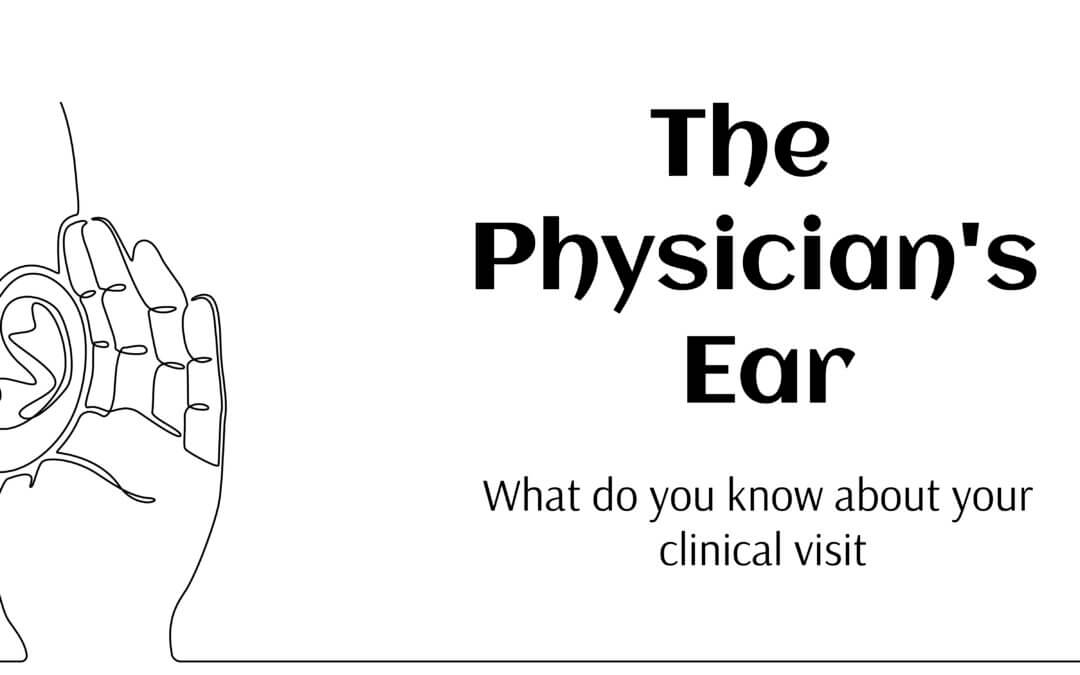What Do You Know About Your Clinical Visit? Part Two.
Author and former consultant podiatric surgeon David Tollafield will explore the essentials of the clinical examination and its implications for patients. If you have not read the short introduction, you are recommended to do so before advancing to parts one, two or three. Click here for the INTRODUCTION
A physician (clinical health worker, usually a medical doctor) has but a short time allocated to absorb a tremendous amount of information. Read the first part of the process here—the physician’s eye. For the sake of modernity in terminology, the clinician is used here rather than a medical doctor, as medical care is provided by a broader range of professionals today.
The Three Elements of Clinical Diagnosis
Observation, listening (taking details), and examination. Chances are you won’t even know what is happening until your clinician (medical doctor or other specialist) starts asking questions. This is where we will begin this article—the part where you tell, and he/she listens. The clinician will focus on the problem to back up the observations taken as you walk into the room and sit down. Clinicians require a keen ear to absorb the information provided by the patient. Those short sentences contain the heart of the information that guides diagnosis and the following process, whether examination of the affected part or the need to seek investigations. The process is well established, and if you know what to expect, you can optimise your clinical visit.
Rooting out the problem
Injury
Infection
Disease
The obvious—why have you come to see me? Put another way, how can I help you?
Medicine is supposed to be more friendly than maybe in the past, but unless relevant, talking about unrelated problems may burden the value of verbal interaction. The following pieces of information are essential:
- What is the problem?
- Where does it affect (which part of the body)?
- How do you feel?
- How long has it been there?
- What makes it worse/better?
- Is there anything you do that improves pain?
- Have you injured yourself?
- Is there anyone in the family with the same condition?
Injury
Injury versus infection is balanced against disease. Most of us understand what injury means and how it causes pain. Is the problem acute, and might it settle? Or is it chronic and, therefore, has gone on for more than three months? Managing pain and healing injuries often requires specialisation, from physiotherapists to other dedicated specialists, orthopaedics, rheumatologists, and pain consultants. In the UK, some investigations are performed from the practice, and others require a specialist’s input. Most of the decisions arise around budget allocation, but that is outside the scope of this discussion.
Infection
Infection is always tricky, as this type of problem manifests in different ways. A wound with all the apparent signs of weeping can be managed, often with first aid. When signs and symptoms fail to settle, intervention is essential. Infections can make us ill and cause changes in how the body functions. Swelling, red streaks, swollen glands and hot areas require urgent attention. Feeling unwell and having problems in the mouth, throat, and upper respiratory tract may be viral, and we know antibiotics do not work on viruses. Anything from shingles to warts may need to be managed. Part of the discussion may rely on the waterworks and gut, and this is where you may discuss the frequency of visits to the bathroom. Since time immemorial, the use of urine and bowel movements has been a feature in clinical questioning. Temperature swings are an indicator of changes in the body from normal menopause to a recent tropical visit where picking up an infection from a sandfly or a parasite may have caused a health problem.
By far, the most significant part of a medical consultation is to ask about how the key organs function—from exertion on the heart and lungs to how we feel. Stress and the impact of depression rank high on the list of consultations, as much as back pain. Medicine has become complicated because many clinical concerns overlap. Once, where diabetes was a straightforward disease and only needed insulin or other management forms, diabetes was linked with other conditions. Consultation periods are often too short to undertake a form of examination that includes every form of evaluation.
Home life, families, and occupational stressors play an ever-increasing effect on health. Weight gain can be a medical problem and often is, but it can relate to other conditions, including stress and depression. No single practitioner in a clinical role can deal with all aspects of health unless the condition is well-recognised and straightforward.
Genetic influences
Genetic diseases in the young are complicated, and new conditions are being discovered constantly. Many clinical practices subdivide their skills to ensure the best healthcare delivery. Once the information you provide has been analysed, the process of examining and balancing one condition against another is considered. Listening is vital, and as patients, we need to know how to guide the process as much as the clinician needs to know the best questions to use to clarify the problem he/she is being asked to manage.
Thanks for reading The Physician’s Ear. Next time, you can read The Physician’s Touch.
David R. Tollafield was a senior lecturer, researcher, and clinician who taught surgical medicine and pathology, as well as a consultant podiatric surgeon for over thirty years. He is the author of academic books and patient guide information. His author site can be reached by clicking here. Consultingfootpain is published by Busypencilcase Communications (BPCC) Est. 2015
Consultingfootpain is published by Busypencilcase Communications (BPCC) Est. 2015

18th February 2025


Recent Comments